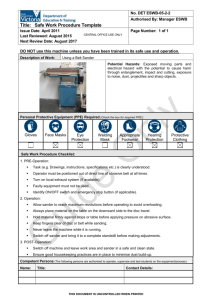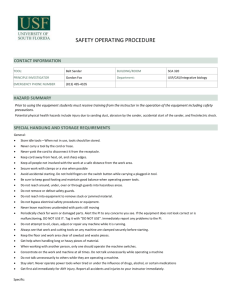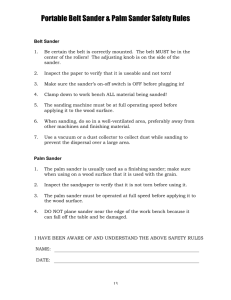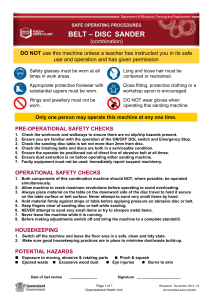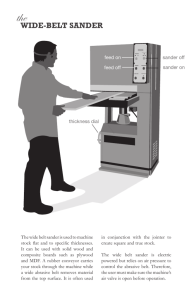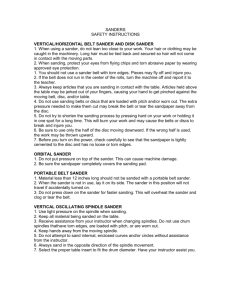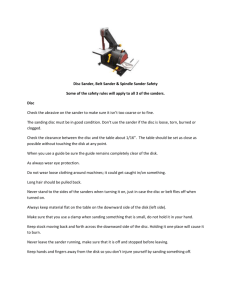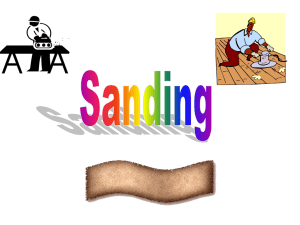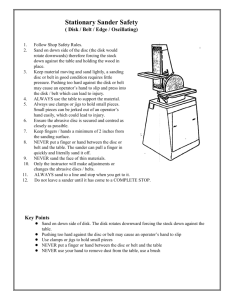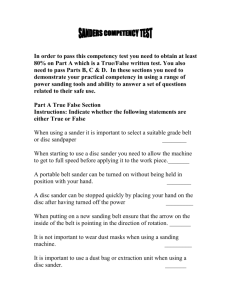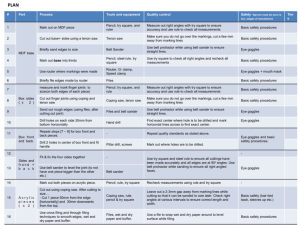Sander, Belt Tag
advertisement
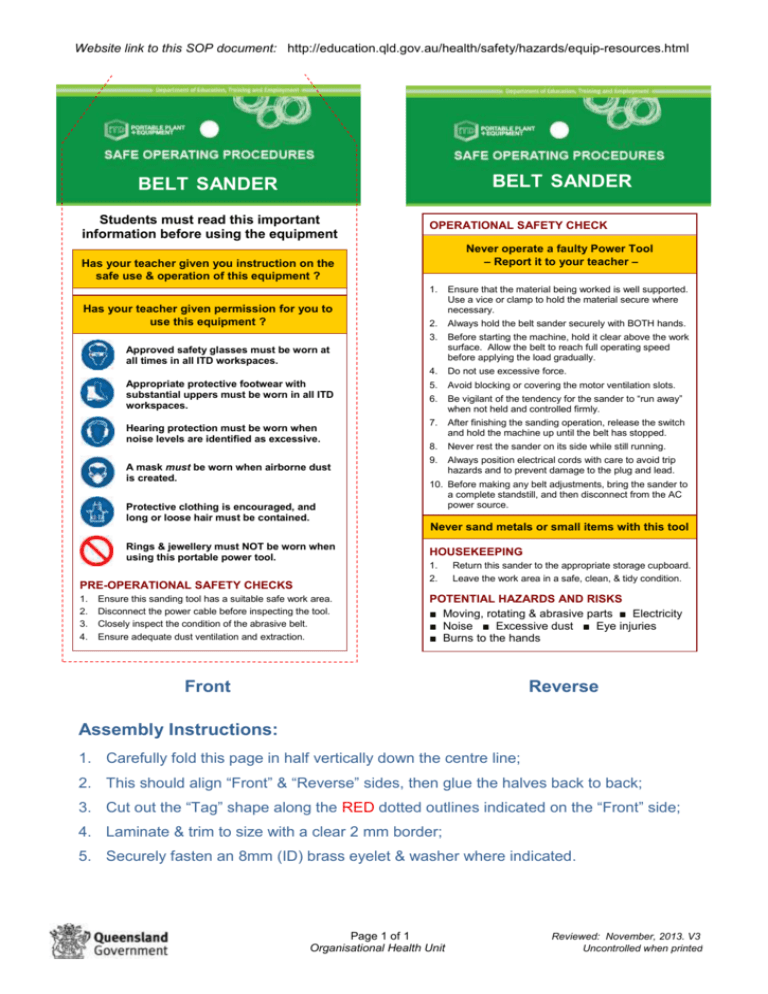
Website link to this SOP document: http://education.qld.gov.au/health/safety/hazards/equip-resources.html BELT SANDER BELT SANDER Students must read this important information before using the equipment OPERATIONAL SAFETY CHECK Never operate a faulty Power Tool – Report it to your teacher – Has your teacher given you instruction on the safe use & operation of this equipment ? Has your teacher given permission for you to use this equipment ? 1. Ensure that the material being worked is well supported. Use a vice or clamp to hold the material secure where necessary. 2. Always hold the belt sander securely with BOTH hands. 3. Before starting the machine, hold it clear above the work surface. Allow the belt to reach full operating speed before applying the load gradually. 4. Do not use excessive force. 5. Avoid blocking or covering the motor ventilation slots. 6. Be vigilant of the tendency for the sander to “run away” when not held and controlled firmly. 7. After finishing the sanding operation, release the switch and hold the machine up until the belt has stopped. 8. Never rest the sander on its side while still running. 9. Always position electrical cords with care to avoid trip hazards and to prevent damage to the plug and lead. Approved safety glasses must be worn at all times in all ITD workspaces. Appropriate protective footwear with substantial uppers must be worn in all ITD workspaces. Hearing protection must be worn when noise levels are identified as excessive. A mask must be worn when airborne dust is created. Protective clothing is encouraged, and long or loose hair must be contained. Rings & jewellery must NOT be worn when using this portable power tool. PRE-OPERATIONAL SAFETY CHECKS 1. 2. 3. 4. Ensure this sanding tool has a suitable safe work area. Disconnect the power cable before inspecting the tool. Closely inspect the condition of the abrasive belt. Ensure adequate dust ventilation and extraction. 10. Before making any belt adjustments, bring the sander to a complete standstill, and then disconnect from the AC power source. Never sand metals or small items with this tool HOUSEKEEPING 1. 2. Return this sander to the appropriate storage cupboard. Leave the work area in a safe, clean, & tidy condition. POTENTIAL HAZARDS AND RISKS ■ Moving, rotating & abrasive parts ■ Electricity ■ Noise ■ Excessive dust ■ Eye injuries ■ Burns to the hands Front Reverse Assembly Instructions: 1. Carefully fold this page in half vertically down the centre line; 2. This should align “Front” & “Reverse” sides, then glue the halves back to back; 3. Cut out the “Tag” shape along the RED dotted outlines indicated on the “Front” side; 4. Laminate & trim to size with a clear 2 mm border; 5. Securely fasten an 8mm (ID) brass eyelet & washer where indicated. Page 1 of 1 Organisational Health Unit Reviewed: November, 2013. V3 Uncontrolled when printed

